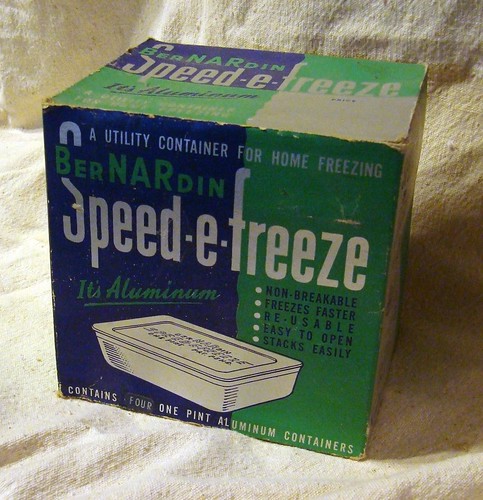 Bernardin Speed-E-Freeze aluminum containers are another of those once-popular household items that today are nearly forgotten.
Bernardin Speed-E-Freeze aluminum containers are another of those once-popular household items that today are nearly forgotten.The Bernardin Bottle Cap Co. of Evansville Indiana marketed them as the ideal freezer containers when they were introduced about 1950. Their lightweight aluminum construction allowed foods inside to freeze quickly; the lids were recessed so that stacked containers were stable, and the slight taper to the sides allowed cold air to circulate freely around the stacks. And they were airtight. The lids snapped on tightly and needed to be pried off (inserting a dime in the small slot between the container and the lid and giving it a twist was enough.)
Bernardin had a whole list of alternative uses for the Speed-E-Freeze tubs. They suggested them for rustproof hardware and small tool storage, small baking pans, and even a pocket-sized tote for lures and fishing flies.
In 1950, this box of four pint containers with lids cost $1.40 and were competing against storage alternatives such as heat-sealable cellophane-lined cardboard boxes, polyethylene freezer bags, and even heavily-waxed paper tubs - all of which were a fraction of the cost (though not reuseable.) Convenience eventually won out over economy, and by the mid 1960s cheap plastic containers - especially single-use plastic bags - had virtually replaced almost every other kind of freezer container.
Today, Bernardin Speed-E-Freeze containers occasionally show up on eBay and at rummage sales, most often as single items but occasionally as sets, complete with boxes and instruction sheets.

.

Thanks, Dave. I am into recycling and just picked up 3 of these containers at a Thrift Store.
ReplyDelete